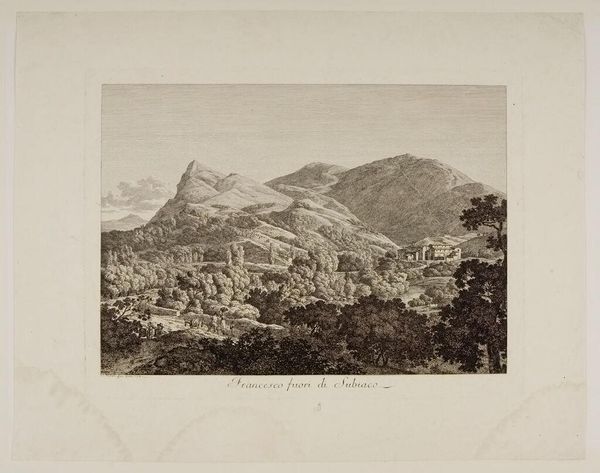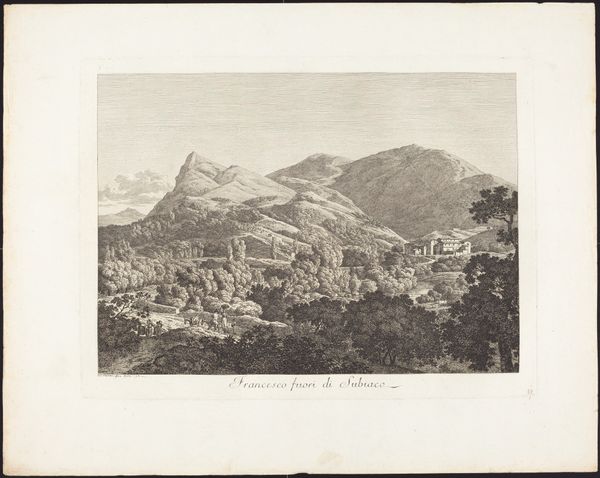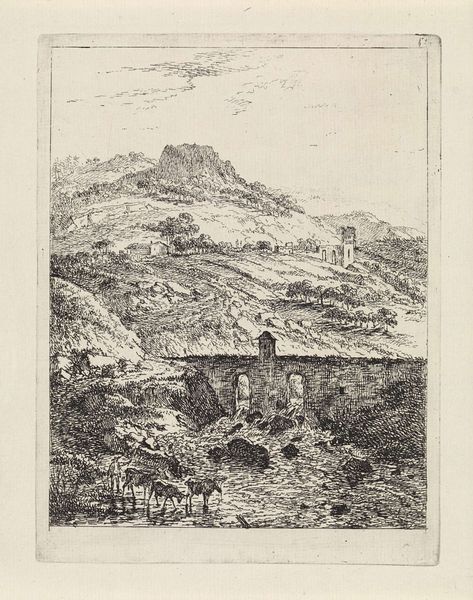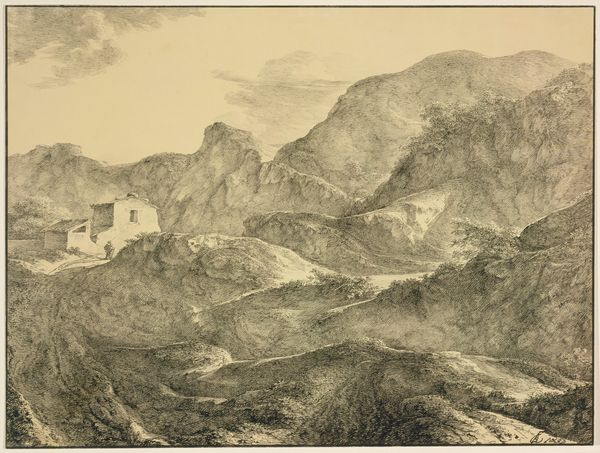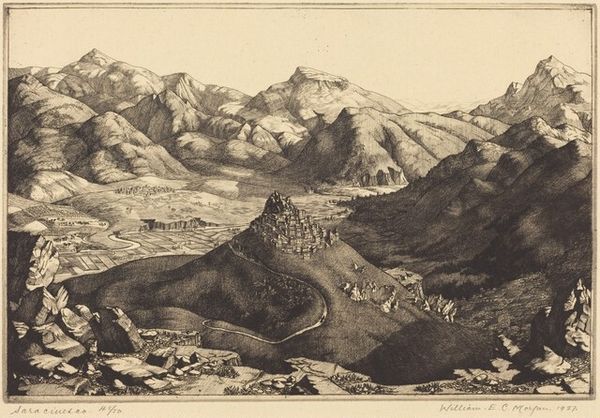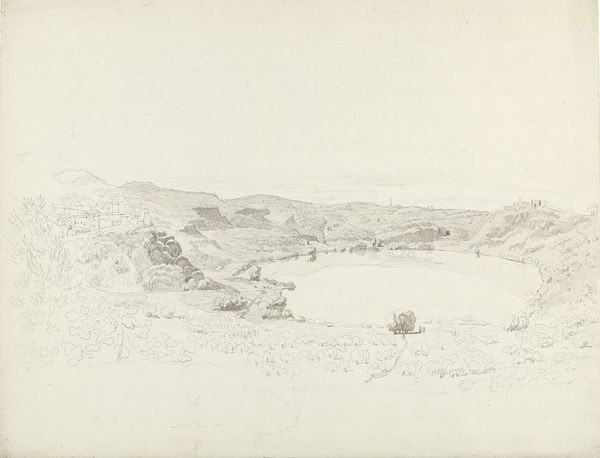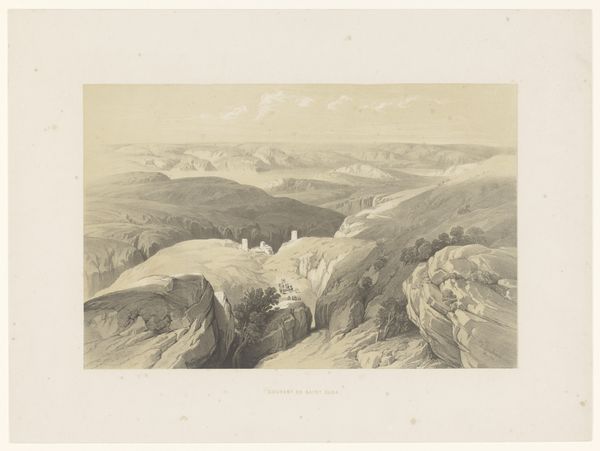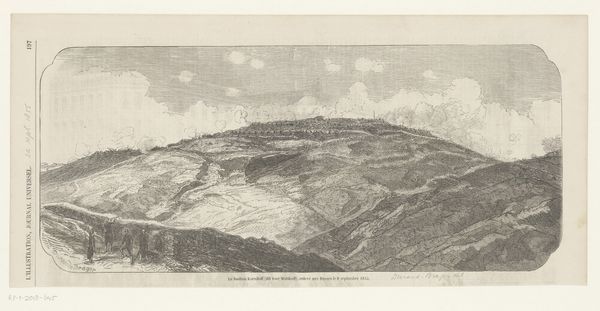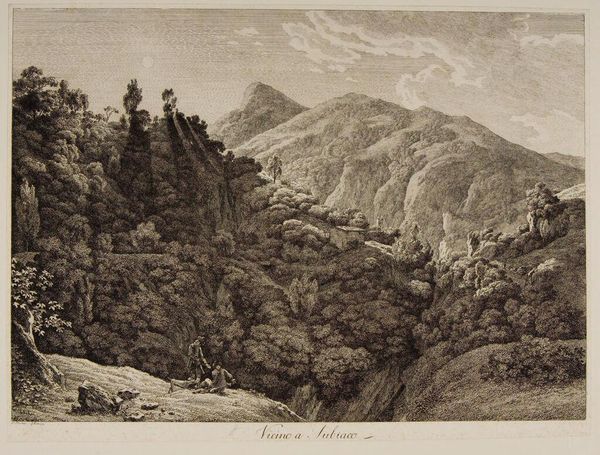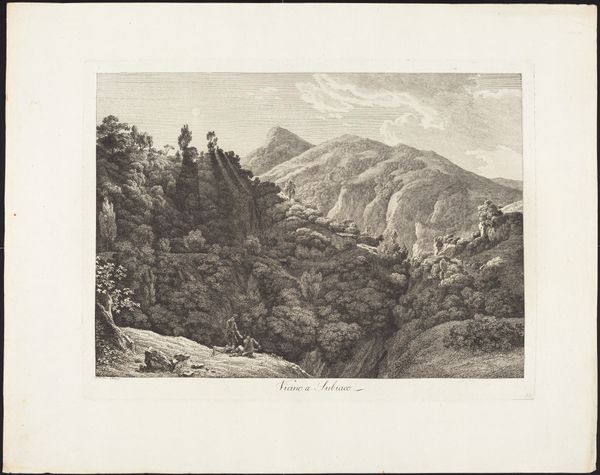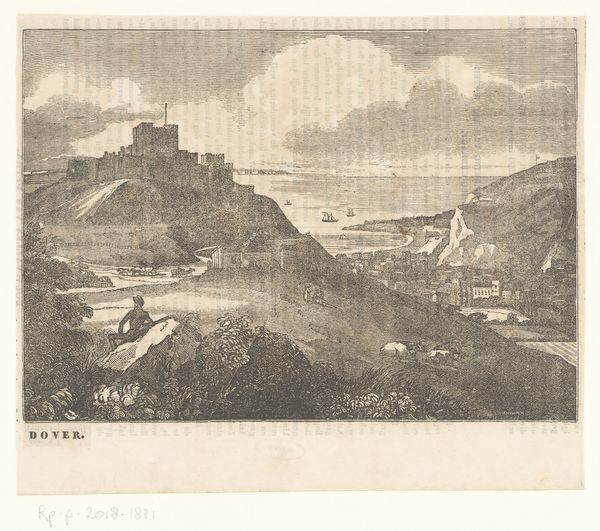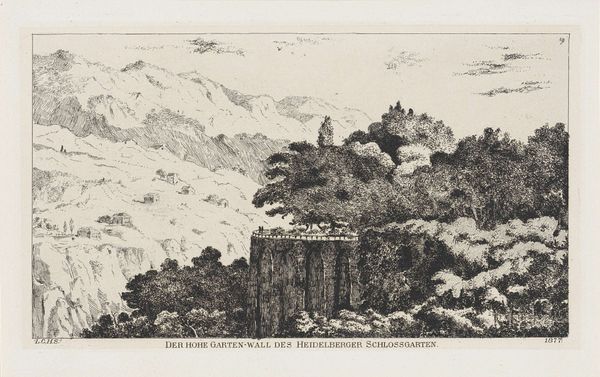
Dimensions: height 156 mm, width 196 mm
Copyright: Rijks Museum: Open Domain
Curator: Before us is Louis Charles Hora Siccama's 1870 etching, "Montalba-le-Château (Frankrijk)," currently held at the Rijksmuseum. Editor: The first thing that strikes me is the sheer labor involved. Look at that painstaking detail rendered through etching; the textures of the mountain face alone must have taken days. Curator: Indeed. And consider the socio-political context of landscape art in the 19th century. Often commissioned by the bourgeoisie, landscapes like these served to reinforce notions of national identity, and a specific relationship to land ownership, or control over territory. This idealized vision ignores the lived realities of rural communities. Editor: But it’s not purely idealised, is it? Notice the traces of labour, like the figures and carts on the road below. The mountains are the means of production themselves. And there's the exploitation of minerals, water, timber—landscape art naturalizes resource extraction. What about its process of consumption by the emergent middle class? Curator: That's a good point. This work’s existence is inextricable from class. Think about who could afford prints like these, and the statement that ownership makes, how these picturesque scenes functioned within a very hierarchical system. Furthermore, depictions of ‘untouched’ nature, are often strategically used to excuse colonial policies and extraction in occupied countries. Editor: I agree that landscape art is entangled with issues of ownership. But let's also consider the medium itself: etching. Its inherent reproducability democratized images, if only to a degree. This particular method also allows us to see Hora Siccama's work as something built layer by layer through practical means: he meticulously built the image up through the etching process itself. We're looking at labour and skill embodied in this print, with both ideological implications. Curator: And by examining who is included in these landscapes, and who is omitted, we can reflect critically about class and access. What are the politics of visibility present in this artwork? Which histories are privileged, and which are marginalized? This can enable visitors to recognize their positions in this intricate matrix. Editor: This work is an interesting document. It can prompt reflections about art production in relationship to class, land ownership, industrial production, labour itself. Curator: Precisely! Through these multi-faceted lenses, we can glean a deeper awareness of the landscape's complex symbolism, seeing not merely scenery, but power relations inscribed on the land.
Comments
No comments
Be the first to comment and join the conversation on the ultimate creative platform.
